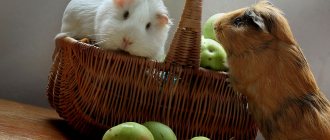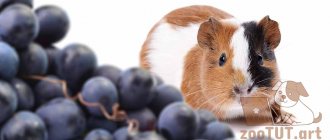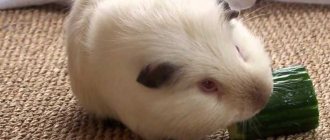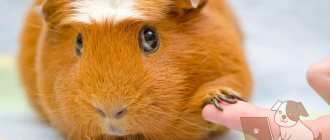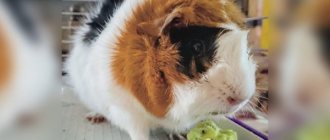Twigs
Twigs ¶
Good evening! I read that pigs should be given twigs to chew on. And what branches can they use (which trees or bushes) Thanks in advance
Twigs ¶
Good evening! I read that pigs should be given twigs to chew on. And what branches can they use (which trees or bushes) Thanks in advance. Apple trees can definitely be used, probably plums and cherries, but I know for sure lilacs can’t. In any case, I gave exactly these and everything was fine.
Twigs ¶
Twigs ¶
You can: birch, ash, maple, apple tree (dry the branches), alder, pear, willow (all types), rowan, linden. They can be given to the pig “for free use.”
Avoid: tree branches that have seeds in their fruit, i.e. apricot, peach, cherry, plum, etc. (because if they have not been dried for at least 6 months, they may contain cyanogen glucosides, which cause intoxication); branches of coniferous trees; citrus branches like orange, lemon, tangerine, etc. (contain limonin).
Twigs ¶
You can: birch, ash, maple, apple tree (dry the branches), alder, pear, willow (all types), rowan, linden. You can put them “for free use” by the pig. “For free use” does this mean both branches and leaves?
Twigs ¶
Twigs ¶
Twigs ¶
Twigs ¶
And I gave my pigs and the little pig before them apple tree branches with leaves and birch. They tore down the birch tree with buds and whole twigs, and from the apple tree there was bark and young leaves at the entrance))) It seems to me that the animals themselves will not eat something harmful to them, although of course, the risk in this case is not justified and it is better not to try. Give only what is absolutely possible.
Twigs ¶
Do any branches need to be dried for six months?
Twigs ¶
Do any branches need to be dried for six months? No, not any, but only branches of fruit trees whose fruits have pits (cherry, plum, etc.), as well as branches of an apple tree, it is recommended to dry them first.
Twigs ¶
I only give birch and willow twigs (the only ones I can pick when we go to the pond, nothing else “edible” grows there). They go out with a bang! Just be sure to wash and dry!
Twigs ¶
Excuse me, but for example, dry apple tree branches with the leaves? Or can you tear off the leaves and give them fresh and dry the branches?
Twigs ¶
Source
Guinea pigs can be given twigs of cedar, spruce, pine, juniper, fir, which is what we do! They are rich in vitamins, carbohydrates and minerals. The needles contain at least 10% highly digestible protein.
Needles improve digestive activity and appetite, have a beneficial effect on the growth of babies, and have a stimulating effect on sexual hunting in adult animals. The needles contain special bactericidal substances, which in moderate quantities are very useful.
Rose hip
Rosehip is a rich vitamin and mineral complex. It contains vitamins C, E, PP, B1 and B2, minerals - calcium, manganese, potassium, magnesium, sodium, phosphorus, zinc, copper and iron. Guinea pigs can eat berries, flowers and rosehip leaves. Rose hips can be given to your pig fresh or dry, but the fuzzy seeds must be removed before feeding. Rosehip is very useful for a pet, as it strengthens the immune system, improves digestion, calms, restores the animal’s strength after illness or pregnancy, helps against atherosclerosis, with abdominal pain, and with the healing of wounds and cracks in bones. Guinea pigs can also be given rosehip infusion into their drinking bowl.
Useful tips for a guinea pig owner.
Instructions.
1. Feeding.
2. Cell selection.
3. Pig hygiene.
Approximately once every 1-1.5 months, pigs have their claws trimmed. It is better to do this with small wire cutters. Be careful, there are blood vessels in the claws! You need to cut off the very tip. In light-colored pigs it is easier to do this, since the vessel in the claw is visible. Weigh your pig once a week to check its condition. Kids should grow, but adults should NOT lose weight. In skinny people, a mucous lump sometimes accumulates in the corners of their eyes during the day (like in humans). It can be removed with a clean handkerchief. If something gets into your eye, you can rinse it with Levomycetin eye drops. We bathe pigs only when absolutely necessary. Remember that bathing is stressful for your pig! After bathing, dry the pig in a towel and then with a hairdryer. Hold the pig - it may get scared by the sound of the hair dryer and fall. In some skinnies, more often in males, dirt accumulates on the back along with particles of dead skin. To cleanse, smear the back with Ratovnik ointment (sold at the pharmacy) and after 5 minutes wipe it with cotton pads to remove makeup. Pigs don't really like this procedure. We use shavings (sold in pet stores) as bedding. Pour a layer of 3-4 cm onto the bottom of the cage. Granular filler made from pressed sawdust can be poured into the corners. You cannot keep a pig on granular litter alone! Firstly, it is uncomfortable for her to walk, and secondly, pododermatitis may develop - her paws swell and hurt, and the treatment is quite long. We change sawdust as needed. In summer, when the grass is green and hot - once every 3-5 days. In winter, once a week. After changing the sawdust, your pig will smell like clean sawdust!
4. Adaptation of the baby.
5. Guinea pig sounds and behavior.
Kwi-kwi! - this is how the pigs scream when they meet you, when they ask for something tasty.
6. Signs of mumps disease.
What to do if your hamster runs away.
If you have adopted a hamster, then you must definitely purchase a cage or put the hamster in some kind of container, otherwise, with its small size, it will not be possible to find it soon if it manages to escape.
If, despite all your fears and warnings, the hamster still runs away, then you need to find it as quickly as possible, because such a small pet faces many dangers when it is outside its living quarters. So what to do?
Ask everyone to be quiet and, if possible, not to turn on the TV or other objects that may make sounds. Walk around the rooms, listen to see if you hear any rustling in the corners or places where there is paper or cardboard. You may also hear scratching. If you hear rustling noises in some place, approach as quietly as possible and pick up the hamster in your arms.
Scatter grains or pieces of his favorite dish throughout the apartment. Just don’t forget that hamsters are very thrifty, so scatter the very minimum amount of food. The next day (if the hamster is still in the apartment) you will see in which room the most treats were eaten, which means the hamster is in that room. Before you find the hamster, it is recommended to close all doors and windows in this room to prevent it from moving to another room.
During the day you can search in hidden places, corners, closets. Because it is during the day that they prefer to sleep and for this they look for a warmer and softer place.
You can glue small rolls from cardboard and place them around the apartment or in the room where it might presumably be located. On the same day you will definitely find him sleeping in one of the rolls.
Place a three-liter glass jar in the middle of the room and fill the bottom of the jar with grain. Make a special lift next to the jar so that the hamster can climb into the jar for a treat. If he gets in there, he won't be able to get back out.
And lastly, don’t worry if all your attempts are unsuccessful. Usually, hamsters come out of their hiding place on their own after a few days.
Preventing "escape":
As absurd as it may sound, a cage is not always the best option for preventing a hamster from escaping. In addition to purchasing a cage, you need to be careful: check whether the cage door is closed, try not to open it again, and if there are children in the house, explain to them that it is better for the hamster to live in a cage, so you should not open it too often.
But also don’t forget that you can provoke the hamster’s escape. It is important to know how you should and should not handle your hamster.
Under no circumstances should you do this:
- It is rude to pick up a hamster by the scruff of the neck.
- stand near the cage and scream.
- sudden movements and waving your arms.
- leave it on high places, the hamster will fall in any case if you don’t remove it yourself.
- take him from the sleeping cage, it is better to wait until he wakes up.
- cover the hamster with your palms or drive it into a closed space.
Recommended:
— talk to him in a calm, peaceful voice.
- before petting the hamster, give him your hand to sniff.
- you need to pick it up slowly and without sudden movements; with your other hand, grab the hamster under the front legs.
- if the hamster is scared, you need to let him calm down first, and then pick him up or play with him.
A hamster, like any other pet, needs care, attention and affection. Provide him with all this, and he will never run away from you, at least his reasons will no longer be of a personal nature, but, for example, because he was given the opportunity to escape by forgetting to close the cage. But there were cases when hamsters did not run away when the cage was open, most likely this was due to the good care he received, the warmth and affection that he received from his owners. Take care of your pets!
Watermelon
Guinea pigs can be given a little watermelon during the summer season. Try to give ripe pulp, and it is advisable not to give the white part closer to the rind, since it is in this part that nitrates accumulate. For the same reason, pigs should not be given early vegetables. Watermelon is a diuretic, so indulge your pet with it infrequently.
The same goes for melon. This vegetable is given from your own garden or purchased in season. It is also not recommended to give melon frequently; it is very sweet and can contribute to the development of diabetes.
We tried to consider in as much detail as possible and give answers to the question “What vegetables can guinea pigs eat?” As you can see, most vegetables are not only possible, but also should be given to guinea pigs. The most important thing is a properly formulated and balanced diet for your pet, including products grown without chemicals. To keep your guinea pig healthy and cheerful, stick to proper nutrition and your pet will thank you with its playful behavior and healthy appearance.
So, we have dealt with the question of what vegetables can guinea pigs eat, but we described in this article whether your pet can eat grass. You may be interested in this information.
https://nalugah.ru/zhivotnovodstvo/morskie-svinki/chem-mozhno-i-nelzya-kormit-morskuyu-svinku.htmlhttps://msvinkam.ru/pitanie/chem-kormit-morskuyu-svinku.htmlhttps:// moy-homyachok.ru/morskie-svinki/kakie-ovoshhi-mozhno-morskim-svinkam.html
Keeping a gerbil
3.Check the drinking bowl every day. There should always be water in it.
4. Monitor the composition of the mixture you feed. It should not contain a lot of seeds (because of them, gerbils can get fat). It is not recommended to give cabbage, grapes, citrus fruits, because... they are bad for their stomach.
6.Do not keep your gerbils cage in direct sunlight. Give them some kind of box or house so that they can rest and hide there.
7.Always make sure that the gerbil's cage is tightly closed and latched. Because These animals are great lovers of climbing everywhere and are excellent jumpers.
8. Do not hold gerbils by the tail (except at the very base). You may damage it. It is also not recommended to put a wheel with horizontal bars in their cage, as they can pinch their paws or tail.
9. Use sawdust, special rodent litter, or wood-based cat litter as filler. It is not recommended to use sawdust from coniferous trees due to their specific odor and oils. To encourage gerbils to make a nest for themselves, provide them with hay or pieces of paper. Do not put cotton wool, wool, mohair or other fibrous materials, as gerbils can get tangled in them and damage their paws. Do not use clay-based cat litter as gerbils have a habit of trying everything on their teeth, and they can be poisoned by it.
10. Clean the cage once every 1-2 weeks with warm water. It is advisable to disinfect it once a month.
Source
Main food
The market provides a wide selection of dry food. Use dry mixtures with herbal granules, cereal seeds, natural or flattened, dried vegetables and fruits. But it is preferable to use granulated feed. In this case, you can be sure that they contain the vitamins or minerals your pet needs. The most physiologically acceptable are grain-free feed mixtures. They consist of hay, dried vegetables, and fruits.
When purchasing a ready-made feed mixture, an amateur ratologist should pay attention to the composition of the components, which is given on the packaging. It is not recommended to purchase mixtures that contain the following components:
- animal fats, eggs, processed meat products;
- sugars and syrups;
- rice;
- propylene glycol;
- potassium sorbitol;
- dyes;
- preservative propyl gallate.
The packaging of feed mixtures contains detailed instructions for their use. The following ready-made feeds are in demand:
- Vita Craft menu.
- Flory Indy.
- Kavia Complet.
- Waka Lux.
- Animals.
- Grain-free feed:
- Benilus Grand Free;
- Vita Verde.
Guinea pig food WAKA
Twigs
Twigs ¶
From: Svinni - April 12, 2007 0:17 Good evening! I read that pigs should be given twigs to chew on. And what branches can they use (which trees or bushes) Thanks in advance
Twigs ¶
Good evening! I read that pigs should be given twigs to chew on. And what branches can they use (which trees or bushes) Thanks in advance. Apple trees can definitely be used, probably plums and cherries, but I know for sure lilacs can’t. In any case, I gave exactly these and everything was fine.
Twigs ¶
Twigs ¶
From: Galina - April 12, 2007 4:54 am
You can: birch, ash, maple, apple tree (dry the branches), alder, pear, willow (all types), rowan, linden. They can be given to the pig “for free use.”
Avoid: tree branches that have seeds in their fruit, i.e. apricot, peach, cherry, plum, etc. (because if they have not been dried for at least 6 months, they may contain cyanogen glucosides, which cause intoxication); branches of coniferous trees; citrus branches like orange, lemon, tangerine, etc. (contain limonin).
Twigs ¶
You can: birch, ash, maple, apple tree (dry the branches), alder, pear, willow (all types), rowan, linden. You can put them “for free use” by the pig. “For free use” does this mean both branches and leaves?
Twigs ¶
From: Galina - April 13, 2007 5:45 am
For free use - this means that the twigs (with or without leaves) can always be at the disposal of the pigs, they do not need to be limited. Here’s another example for you, a statement from the forum: My pigs get plenty of hard feed and their bite is fine. In the summer, I stocked up on apple branches with leaves (one of my favorite treats) as an additional diet; in addition to the leaves, she also eats branches, nibbles them off and eats them, chewing them thoroughly.
Twigs ¶
From: Svinni - April 13, 2007 2:45 pm
Can pigs have cherry branches and leaves? And I didn’t quite understand something, can I have imiren or not?
Twigs ¶
From: Galina - April 14, 2007 0:49
Can pigs have cherry branches and leaves? And I didn’t quite understand something, can I have imiren or not? I don't know anything about lilacs. The only thing I can say is that I have never seen a single animal that would eat it, and I have never even seen caterpillars on it. Cherry branches may contain the same substance as the fruits inside in the pits - albeit in smaller quantities, and it is toxic. That’s why it is recommended to dry cherry branches (and all fruit trees with seeds) for six months before giving them to the pig.
Twigs ¶
From: L_enok - April 14, 2007 2:50
And I gave my pigs and the little pig before them apple tree branches with leaves and birch. They tore down the birch tree with buds and whole twigs, and from the apple tree there was bark and young leaves at the entrance))) It seems to me that the animals themselves will not eat something harmful to them, although of course, the risk in this case is not justified and it is better not to try. Give only what is absolutely possible.
What branches can be given to guinea pigs?
1. The cage should always have sufficient quantities of: - Water in the drinking bowl (I recommend 250g Trixie drinking bowl because it can be disinfected with boiling water, and other drinking bowls melt from boiling water. If there are 1-2 animals in the cage, if there are more than 2 pigs - the drinking bowl is 450g) - Meadow hay (no unpleasant odor, no rotten or dirt impurities)! — Grain mixture in the feeder (1-2 tablespoons per day). — Mineral stone (white or pink, Trixie is great). 2. Give vegetables and fruits 2 times a day - morning and evening. Give as much as the pig wants (you can alternate 1-2 vegetables (fruits) one day, and the other two the next day). ATTENTION! Give any new food very carefully and in small pieces measuring 2 cm by 2 cm and watch the “poop” - if it becomes soft like plasticine, this is a sign of poor absorption. Eliminate new food for the time being. Usually everything is restored within 1 day. Then you can try again. VEGETABLES Carrots (tops can also be given) Broccoli Chinese cabbage Kohlrabi cabbage (in large quantities can lead to bloating) Head lettuce (ground) Cabbage (in large quantities can lead to bloating) Pumpkin Beets (tops can also be given) Rutabaga Jerusalem artichoke (root vegetables) and leaves) Zucchini Sweet corn (cob and leaves) Cauliflower leaves Cob and sugar beet Cucumbers (as a treat, i.e. a few pieces) Tomatoes fruit only (as a treat, i.e. a few pieces)
FRUITS AND BERRIES Apples Bananas Pears Strawberries (as a treat, i.e. several berries) Dried rosehips Kiwi Tangerines (as a treat, i.e. several pieces) Grapes (without seeds and peel) Oranges (as a treat, i.e. several pieces) Watermelon Melon
GREENS AND HERBS Celery Spinach Dill (as a treat, several sprigs each) Parsley (as a treat, several sprigs each) Nettle (dried) Dried mint Dandelion Alfalfa Strawberry leaves Strawberry leaves Raspberry leaves Plantain Clover Yarrow Chamomile Sage Wormwood Sunflower (whole plant) Shepherd's purse Wheatgrass Wheatgrass Sow thistle Feed additives Sprouted oats Sunflower seeds Sprouted sunflower seeds Oat flakes Pea flakes Raisins (unprocessed) Dried vegetables and fruits White bread croutons Ground nuts (as a treat, i.e. 1 piece per day) Fresh tree branches and dry leaves Apple tree Pear Maple Willow Birch Spruce, pine branches in winter (as a delicacy)
ATTENTION! Plants that can be poisonous to guinea pigs! Stone fruits - cherries, sweet cherries, plums, dogwoods, apricots, peach Walnuts (tannins) Acacia is poisonous (even flowers can be poisonous) Sorrel - oxalic acid corrodes the lips of pigs Radishes - spicy Horseradish (leaves and roots) Euphorbia - poisonous Buttercups all - Potatoes and all nightshades are poisonous.
Poisonous plants
When going to collect herbs for your beloved pet, you need to remember that there are a number of poisonous plants that not only cause poisoning, but also lead to death.
Plants that are poisonous and dangerous to guinea pigs include:
- Fighter, Arum, White acacia, Common aloe, Common and lemon geranium, All types of ferns, All types of lilies, Sorrel, Nightshade, Henbane, Lilies of the valley, All varieties of narcissus, Hyacinths, Celandine.
The following are considered dangerous for animals:
- Bay leaf, Gorse, All types of wisteria, Yew, All types of ivy, Derain, Common broom, Dogwood and all types of honeysuckle.
It is strictly forbidden to feed the following tree species:
- Twigs of thuja and oleander, Privet, Shoots and roots of juniper, Berries, leaves and twigs of elderberry, Mistletoe, Leaves, shoots and twigs of hellebore and belladonna.
NUTRITION AND RATION.
9 messages
Guinea pig nutrition is a very important topic. We will try to put as much information into this topic as possible. Adult pigs require from 10 to 20 mg of vitamin C per day. The need for vitamin C may depend on seasonal fluctuations, under normal conditions, pigs kept in an apartment require from 10 to 15 mg, pregnant females about 20 mg. Products lose some of their vitamins during long-term storage in winter; vitamin C in them is reduced by an average of 1/3. Also, the availability of nutrients is influenced by many factors, for example, storage conditions, types of varieties (different types of carrots, different varieties of apples), seasonality, etc. If you are giving fresh foods, then you should not give additional vitamin C, as this can only cause harm. With an excess of vitamin C in the urine, acidity increases, and a predisposition to kidney disease and skin irritation develops. The calcium/phosphorus balance should be 1.5:1. In animals with kidney problems, too much calcium in the diet can lead to the formation of kidney and bladder stones.
Incompatible vegetables - this termite means that these vegetables can cause more harm than good
Bulbous plants such as leeks, onions, and garlic are toxic. Legumes (beans: lentils, peas, beans) can cause bloating; feeding only green sprouts in small quantities is allowed. Raw potatoes contain indigestible starch, green spots and green sprouts are poisonous (contain solanine). Radishes and radishes contain a lot of essential oils, which can lead to irritation of the mucous membranes and cause bloating. You can offer tops from these vegetables. You can use the radishes themselves, if they are not spicy. Rhubarb, due to its high oxalic acid content, is toxic.
What to feed your guinea pig?
Guinea pigs are one of the most popular pets. Caring for them is quite easy, and even a schoolchild can cope with this task.
The pigs' cage is cleaned 1-2 times a week, and compressed sawdust, wood shavings or cat litter are poured onto the floor.
What should you feed your guinea pig so that it lives out its life healthy, playful and happy?
The main food of guinea pigs is hay . It must be in the cage at all times. Hay normalizes the functioning of the animal’s gastrointestinal tract. Together with the hard grain , it helps the pig wear down its teeth. Guinea pigs are rodents; their teeth grow throughout their lives. If the incisors are not allowed to wear down, they grow so large that they prevent the animal from closing its mouth and chewing, which can lead to illness and death of the pig.
You can buy hay at the store or make it yourself. If the hay has darkened, acquired an unpleasant odor or become damp, then you should not feed it to animals. It is better to throw away such hay and not even use it as bedding: after all, the pig can eat it and get poisoned.
Photo: pixabay.com
Pigs can be fed many types of herbs : dandelion, plantain, clover, nettle, alfalfa, chamomile, yarrow, knotweed (popularly known as knotweed), spinach, meadow chin, sweet clover, mouse pea, mantle, meadowsweet, mallow, fireweed, tansy, wormwood, bluegrass, peas, seradella, soybeans, vetch, china, sunflower, corn, sorghum, sudanese, millet, oats, quinoa. Spicy herbs that pigs eat well include parsley, dill, and celery.
But parsley is contraindicated for pregnant pigs.
All herbs can be given both fresh and dried.
If you are not sure of identifying the type of grass, then it is better not to risk the health or even the life of your pet - you should not offer him an unknown or dubious plant.
Pigs gnaw tree branches : acacia, hazel, aspen, willow, birch, oak, alder, maple and poplar, as well as branches of fruit trees.
Apricot, cherry and lilac branches are poisonous to most animals.
It is unacceptable to use only green food in caring for an animal: it upsets the stomach.
From succulent food, pigs are fed vegetables, fruits and berries: carrots, cabbage (in small quantities, to avoid digestive upset), cucumbers (only in the summer, non-greenhouse), lettuce, zucchini, pumpkin, bell peppers, beets ( if possible, give your pigs feed varieties, although a little beetroot won't hurt either), a small piece of fresh potatoes, apples and pears. Pears should be fed with caution and little by little to avoid constipation. It is better to offer them dried berries: rose hips, blueberries, black currants.
There should always be grain in the feeder - whole, of high quality, with a pleasant smell, without mustiness or mold. Feeding grain infected with fungi can lead to the death of the pig. Many types of grain mixtures are sold in stores. As a rule, dried fruits and vegetables and herbal granules are mixed with them. Not all pigs eat pellets, especially if their diet includes complete grass and hay. You can determine which grains your pig likes more than others and prepare the mixture yourself, taking into account your pet’s tastes.
Photo: pixabay.com
Treats
This category includes roughage, succulent food and tasty supplements. It is safer, although more expensive, to purchase hay for Guinea pigs at pet stores. You should not feed your pig herbs collected from a flower bed or near the road. There is a danger of becoming infected with helminths or poisoning. Green food prepared in safe places must be dried a little before feeding to avoid rapid fermentation.
Hay
The market offers a variety of treats for guinea pigs:
- herbal sticks;
- vegetable biscuits;
- dried fruits or vegetables;
- edible toys;
- delicious wood twigs.
Treats for guinea pigs
Among the delicious foods for Guinea pigs, in addition to useful ones, there are also harmful or poisonous ones. Therefore, all feed prepared by the porpoise breeder is divided into permitted and prohibited.
Do they produce leaves?
Young branches are covered with leaves until autumn, which allows them to be included in your pet’s menu during the spring and summer. The leaves of the trees are juicy and aromatic, so they will be a healthy and tasty addition to a rodent’s diet.
Along with greens, you can pamper your pet with branches of those plants that are allowed in the animal’s diet. It is also separately allowed to offer the animal birch (along with buds), willow, linden, and maple leaves. The listed components of the diet are offered to the rodent without restrictions, that is, placed in a cage, without controlling how much raw material the pet will eat.
When preparing plant materials for a rodent, you need to choose only healthy trees that are located away from the roadway and industrial facilities. Before giving a sprig of greens to an animal, it must be washed and air dried. For the winter, the owner is recommended to make a supply of plant food by washing and drying the collected preparations for several months in the open air.
Source
